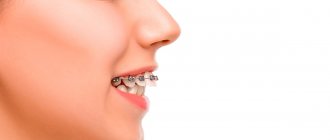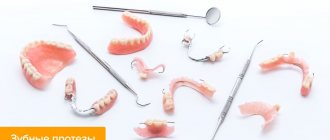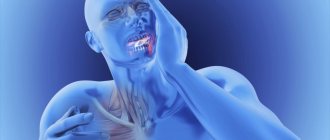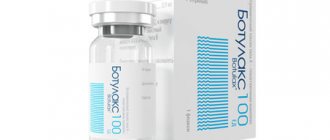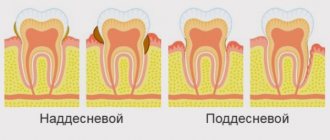- Signs of correct bite
- Types of malocclusion
- Why do you need to correct your bite?
- Until what age can a bite be corrected?
- Ways to correct a bite
- Aligners
- Trainers
- Veneers
- Bracket system
- Types of braces
- Which braces system should you choose?
- How long does it take to correct a bite?
- How to care for braces?
Malocclusion occurs in almost 80% of the Russian population. In a third of cases it requires orthodontic treatment. And it’s not just a matter of aesthetics - if you are often bothered by headaches, earaches and dizziness, then perhaps it’s a malocclusion. An orthodontist deals with the correction and prevention of malocclusions.
The most common misconception about bite is related to age. Many people think that it can only be corrected in childhood, but today, with the advent of new technologies, this can be done at any age.
In this article we will look at the causes and types of malocclusion and why it needs to be corrected. We will also tell you about treatment methods and dispel the most common fears. Orthodontist Olesya Milagina comments on current issues of orthodontic treatment for us.
Signs of correct bite
To begin with, we will show what a normal bite looks like and list the signs by which you can understand that it is normal.
- The main distinguishing feature of a correct bite is the tight contact of the upper and lower jaws when they close. The upper front teeth cover the crowns of the lower ones by a third, that is, the lower incisors come into contact with the palatine tubercles of the upper ones. There is no distance between the upper and lower chewing teeth, and during chewing they are in constant contact.
- Correct bite affects the harmony of facial proportions: the lower and upper jaws are symmetrical.
- There are no speech defects.
- Food is comfortable to bite and chew.
- There is no discomfort or clicking in the jaw joint.
Sunken cheeks and open mouth
Now let's consider such a variant of dental anomaly as an open bite. An open bite is one in which either the front or lateral teeth do not close together, that is, a gap is formed between the dentition. If a gap forms in the anterior section (between the incisors and/or canines), then the person’s mouth always remains slightly open, which is why the lips often dry out, and the facial expression becomes surprised or even stupid. If a gap (or gaps) appears between the side teeth, this can lead to a violation of the symmetry of the face or hollow cheeks, similar to hollows in the absence of teeth.
Types of malocclusion
How can you tell if your bite is wrong? Essentially, these are all deviations from the norm that nature has established.
Malocclusion occurs:
- distal - the upper jaw is pushed forward more than the lower jaw;
- mesial - the lower jaw is pushed forward more than the upper jaw;
- deep - the upper teeth overlap the lower ones by more than half their length;
- open - most of the teeth of the upper and lower jaws do not meet;
- cross - the left and right sides of the upper dentition protrude forward unevenly, and the upper and lower teeth meet with cutting edges.
How to apply blush to narrow your face
If you apply makeup correctly, your face will be visually narrower and slimmer.
To narrow your face with blush, you need to make the skin under your cheekbones a shade darker.
For this purpose, dark blush, dark shades of foundation or matte bronzer are suitable, which makes the skin tanned. How to apply these products?
- With your mouth closed, lower your lower jaw and draw in your cheeks. The cheekbone line is clearly drawn on the face.
- Apply a dark shade to the area under the cheekbones, moving from the center of the cheek to the ear.
- We apply highlighter to the top point of the cheekbones to emphasize: everything light appears visually larger.
All cosmetics should be used without fanaticism and the line of transition from one tone to another should be shaded so that the face does not lose its naturalness.
The second way is to focus on the eyes and eyebrows to distract the viewer’s gaze from the cheeks. We paint the eyelashes in two layers, giving a neat shape to the eyebrows.
The main advantage of this method is that you can narrow your face with makeup in a few minutes, on your own and almost free of charge.
Why do you need to correct your bite?
- Increased abrasion, caries and tooth loss.
Normally, when chewing, the load is evenly distributed across all teeth. When there is a malocclusion, the load on some teeth increases, while on others there is practically no load. On teeth that “work for two,” the enamel wears off faster, chips appear, and the teeth themselves become loose. Teeth that are “resting” are more vulnerable to caries. - Gum diseases.
With an incorrect bite, the teeth can be tilted inward or, conversely, turned toward the lips. Eating or even normal conversation can injure the inside of the cheeks and tongue. The gums also suffer: the volume of tissue gradually decreases, exposing the roots of the teeth. - Diseases of the temporomandibular joint.
Incorrect positioning of the incisors over time leads to displacement of the jaw joints relative to each other. The pathology is accompanied by muscle spasms, bruxism, crunching and clicking while eating or talking. - Diseases of the food tract.
The bite is responsible for chewing and swallowing, and defects in the bite disrupt this process. Poorly chopped products are an additional burden on the gastrointestinal tract, which provokes gastritis, enterocolitis and problems with stool. - Breathing problems and ENT diseases.
The accumulation of bacteria in the mouth during an open bite can cause sinusitis, sinusitis, otitis media, and sore throat. - Communication problems and complexes.
For 60% of patients, braces are aesthetics; for the remaining 40%, it is either the functionality of the masticatory apparatus, or a solution to a problem with the temporomandibular joint, or a preparatory stage before prosthetics.
Almighty Orthodontics
It is known that doctors tried to treat anomalies and deformations of the dental system for a very long time, and at the beginning of its development, “orthodontic treatment” was not a painless procedure. To eliminate aesthetic defects caused by incorrect positioning of teeth, doctors typically used finger pressure on the teeth, rotated them with forceps, or simply removed them.
It is believed that the term “orthodontics” was first used in 1840. It denoted “the science that has to do with correcting misaligned teeth.”
The term “Orthodontics” is derived from the Greek words orthos - straight, correct and odus, odontos - tooth.
At first, this term really lived up to its description, but over time, as knowledge accumulated and treatment methods improved, in addition to correcting the incorrect position of teeth, doctors began to engage in more complex treatment of dental anomalies and malocclusions.
This is the time to note that if a person has straight teeth, this does not mean that he has the correct bite.
Ways to correct a bite
Today there are four ways to correct a bite and one way to carefully disguise the problem.
- Aligners
- Trainers
- Bracket systems
- Surgical intervention
We have listed these methods in order from easiest to most difficult. You must understand that each case is individual, and depending on this, the doctor will select the optimal bite correction system. You can hide an unaesthetic bite with the help of veneers - we will also talk about them.
Aligners
Removable aligners that are created from dental impressions. The most modern way to correct a bite, which is suitable for the treatment of simple disorders.
After drawing up a treatment plan, the patient receives 3–5 sets of aligners of varying stiffness. The mouth guard is designed to last for two weeks, and then it needs to be changed to the next one, and so on until the final result. The course of treatment lasts on average 4–8 weeks.
Aligners need to be worn 24 hours a day, and this may not be comfortable for everyone. They are not suitable for deep bites. The mouthguard is designed so that it is “one step” ahead of the current position of the teeth in the dentition. Therefore, after putting it on, pressure is felt, which is evenly distributed throughout the jaw. Aligners consist of an elastic transparent material, so they are invisible to others, unlike braces.
Trainers
Removable silicone mouth guards for two jaws, which help correct a simple bite or consolidate the result. You need to wear the trainer during sleep and during the day for up to 4 hours.
Veneers
The characteristics are similar to crowns, but they are installed only on the front surface of the tooth in the form of a thin plate on a special dental glue.
Veneers can be composite, ceramic or zirconium. The first two types last about 10 years. Products made of zirconium dioxide with external porcelain coating - up to 15 years.
Veneers eliminate defects that arise as a result of cracks or damage to the integrity of teeth. A visually straight dentition is formed.
For the patient, the result of orthodontic treatment is aesthetics, and for the doctor, it is functionality. If your teeth are just crooked and your bite is perfect, you can get veneers or crowns. In other cases, you cannot do without braces: veneers do not correct the position of the teeth, but only mask their external imperfections.
Bracket system
Braces are small clasps that are attached to the teeth with a special composite glue. A metal arch is placed in the grooves of the braces - the most important element of the braces system. The arch has the shape of a regular dentition. She pulls her teeth, setting them in the correct position. In order for the bracket system to successfully complete its work, it is important to periodically change the arches to more elastic ones.
The doctor fixes the arch on the braces with special rubber bands - ligatures. Depending on the task at hand and the required force that will act on each tooth and jaw as a whole, the orthodontist can choose metal or elastic ligatures. The latter have a clear advantage - when they are changed, you can get rid of the bacteria accumulated under them.
Increased salivation in the first days after installation is a good reaction of the body. The tongue contains sensory neurons that, when food appears in the mouth, send signals to the brain to turn it into a food bolus. When braces are put on your teeth, at first the brain perceives them as food. This is the body’s reflex that there is something in the mouth, which means it needs to be treated with saliva in order to then swallow it. After some time, the salivary glands will get used to it.
Does it hurt to wear braces?
The first days are unusual, but not painful. But if braces scratch your lips and cheeks, you shouldn’t tolerate it. “ Make an appointment with your orthodontist. Sharp elements can be corrected with special materials and filled with special wax
“, our expert advises.
The same applies to tooth sensitivity: sign up for a diagnosis. It is possible that areas of demineralization have appeared. Depending on what the teeth react to, further treatment will depend.
Types of braces
Braces are classified according to the following criteria:
- material (metal, plastic, ceramic and sapphire);
- technique (classical and self-ligating, without ligatures);
- Place of installation (on the outer surface of the teeth - vestibular, on the inner surface - lingual).
Metal braces
Despite the fact that these are the oldest braces systems, they are still popular, and not only because they are the cheapest. Their main advantage is the minimal friction force between the groove and the arc, the magnitude of which largely determines the duration of the entire treatment.
The only negative is that such braces are noticeable on the teeth. However, modern designs differ from their ancestors - they are smaller and more convenient.
Plastic braces
Second after metal ones in the price range. Since plastic itself is not strong enough, the design has metal grooves. Their disadvantage is that such braces are stained by coffee, tea and other coloring products. They are also more fragile than others. However, plastic braces come in a variety of colors and shapes and are therefore popular in pediatric orthodontics.
Ceramic braces
More expensive, but stronger than plastic ones. The color matches the color of the teeth, which makes them almost invisible. Their disadvantage is higher friction between the arch and the bracket slot, which can increase the duration of treatment.
Sapphire braces
Artificial sapphires are used to make them. They are transparent and shimmer beautifully in certain lighting. This design will appeal to those who are sensitive to aesthetics.
Combined braces
Consist of several materials. In the smile area it can be ceramics or sapphires, and in the chewing area it can be metal.
Lingual braces
They are attached to the inside of the teeth and are invisible to others. Their main disadvantage is their high cost. Also, at first they may interfere with diction, but after 2-3 weeks the language adapts and the problem goes away.
Doctor, I have a wide face shape – what should I do?
For those who need permanent results, plastic surgery comes to the rescue. There is plenty to choose from.
- Installation of Medpor chin implants elongates and significantly harmonizes the face. It is believed that all the biggest Hollywood careers begin with chin correction.
- The second most popular procedure is the removal of Bish's lumps. It turns out that in addition to subcutaneous fat, we also have deep cheek packs of fat, and often it is they that give plumpness to our cheeks.
- Laser liposuction of the face. In this case, the destruction of fat cells is carried out by laser. A cannula with a laser attachment is inserted through punctures in the anatomical folds in the ear area.
- Thread lifting helps to cope with the initial age-related sagging of the skin - jowls. The threads pull the soft tissues upward, making the face noticeably narrower and slimmer.
Angelina Jolie
The shape of the implant is selected individually to emphasize the feminine, or, conversely, masculine features and character of its owner.
Thus, a strong-willed wide chin gives the face masculinity, while a narrow and elongated chin gives a woman’s face an attractive heart shape.
After the operation, the cheekbones become more pronounced, the cheeks lose excess volume, and the face narrows. The operation is performed intraorally and does not leave scars on the face.
Removing Bish's lumps. Performed by surgeon: Maxim Vasiliev.
“Before” and 10 days “after” rhinoplasty (surgeon Mkhitar Meloyan) and removal of Bisha lumps (surgeon Andrey Iskornev). The lower third of the face stretched out, the heaviness of the cheeks went away. The face looks lighter and more harmonious.
It is important to understand that in order to perform an operation, the doctor must have a well-developed sense of proportion. There is a risk of getting excessive cheek retraction after removing Bisha's lumps. Then the face takes on a tired, haggard appearance. At Platinental we remove just enough to keep the face fresh, natural and attractive.
After fat removal, the cannula is switched to collagen stimulation mode - this way the skin recovers and tightens faster after the procedure.
The procedure allows you to get rid of fat deposits and narrow your face without scars - two-millimeter punctures heal without a trace.
Which braces system should you choose?
The least expensive and most proven option is metal braces. Plastic ones are also inexpensive, but they are inferior in strength to metal ones. If aesthetics are more important to you, opt for more expensive ceramic, sapphire or lingual braces.
As for “internal” braces, their only difference from all others is the aesthetic factor. One of the inconveniences is that such braces change the diction, they are more difficult to care for and they are not suitable for everyone. You need to have an almost perfect bite: just “uneven teeth.”
Do exercises help narrow a face with wide cheekbones?
To narrow the face, face-building instructors recommend training the muscles of the cheek-zygomatic region, and in theory, the exercises can have a good effect.
Facial fitness or a new gadget for facial gymnastics.
We will not dissuade you from gymnastics, because keeping your facial muscles toned is useful in any case.
Unfortunately, you won’t be able to “pump up” just one or a couple of muscles in isolation. To one degree or another, all groups of facial muscles will be loaded, including those zones that expand the face.
How long does it take to correct a bite?
Each case is individual, so without visiting a doctor it is impossible to say how long treatment will take.
The minimum treatment takes a year for the bone to grow and the teeth not to come back. The result needs to be stabilized. Patients often tell me after two months of wearing braces: “I want to take them off, everything is already straight for me!” But this is appearance. The jaw bones must anchor the teeth into their new position.
The duration of treatment also depends on the patient. The orthodontist puts a certain force into the braces, which weakens by the next visit. That is why it is important to strictly visit the doctor once a month so that you do not have to prolong the course of treatment.
My teeth began to loosen. Something is going wrong?
Loose teeth after installation should not scare you. The teeth will be in motion throughout the treatment period. Essentially, we move our teeth: somewhere the bone dissolves, somewhere it appears. Six months after treatment, the teeth will return to normal.
The purpose of braces is to change the position of hard and soft tissues adjacent to the tooth. But this is not enough to correct the bite. Teeth may move back apart some time after braces are removed if a retention device is not in place. After correction, retainers must be installed to keep the teeth stable in their new position. If this is not done, the effect of wearing braces will gradually disappear.
Optical illusions, or why relative facial proportions are often more important than absolute ones
Do you perceive your face as wide? To narrow it down, it is not at all necessary to go to South Korea and undergo a complex operation to cut away excess bone tissue. In most cases, it is enough to change the “weight distribution” of the features on the face.
Expert comment:
“Look at Lindsay Wixson, for example. This is a world-famous model. Her wide oval face is in demand at the shows of Chanel, Sisley, McQueen, and Versace.
But why don’t we perceive her wide face as heavy? The image of this beauty is “saved” not only by her large eyes, but also by the very graceful line of her lower jaw. This is what gives the face the necessary fragility.
And there are many such rules for an attractive face.”
Maxim Vasiliev, plastic surgeon.
Lindsey Wixson
For example, there is the three-thirds rule, which was formulated by Leonardo da Vinci.
According to the rule, the face can be divided into 3 parts by two horizontal lines. One of them runs along the line of the eyebrows, the second - at the level of the base of the nose. For the face to appear beautiful and harmonious, it is necessary that 3 parts - from the base of the hair to the eyebrow line, from the eyebrow line to the base of the nose and from the base of the nose to the chin - are equal.
In a harmoniously beautiful face, the distance from the hair growth to the eyebrow line, from the eyebrow line to the base of the nose and from the base of the nose to the chin is approximately the same.
If, against the background of a round face, measurements show a lack of chin area, to narrow the face you will not have to remove the cheeks - it will be enough to enlarge the chin. This simple manipulation will significantly lengthen and narrow your face. That is why before each appearance harmonization procedure we carry out a series of measurements and mathematical calculations.
There are different methods to change the “weight distribution” of traits. From playing with light and shadow when applying cosmetics to permanent methods of plastic surgery.
We will not talk about the most obvious reason for facial fullness associated with excess weight. If after losing weight you do not get the desired effect, then you need to look for other ways to make a wide face narrow.
We will start our story with home remedies, then we will talk about the latest low-traumatic developments in the field of cosmetology and plastic surgery.
How to care for braces?
Caring for braces requires care and discipline. We talked about it in more detail in a separate article. After installing braces, the doctor will tell you how to live now. We will indicate the most important things.
- Always have brushes and a single-tuft brush on hand.
- Add a waterpik to your arsenal.
- If you are not sure that you have brushed your teeth well, use an indicator tablet. After brushing your teeth, the tablet must be dissolved in your mouth. The areas where plaque remains will turn blue. These areas need to be cleaned again.
- Avoid very hot and very cold drinks. Braces, like enamel, do not like sudden temperature changes.
- To prevent braces from coming off, follow a diet. Eliminate nuts, toffees, seeds, and flour from your diet. Apples and other hard fruits should not be bitten off, but cut into small pieces and placed on the chewing teeth.
How to make a face using cosmetic methods
- For overall facial fullness, lipolytics Aqualyx and INNO-TDS Draining ppc are considered the most effective. These drugs safely “burn” and remove excess subcutaneous fat. Their effect is comparable to liposuction, so do not trust the procedure to a cosmetologist. The drug should not get beyond the fatty areas. The procedure should only be performed by a doctor who is familiar with the anatomy of the face in detail.
- We use Botox injections using our own exclusive Platinental techniques to relax hypertrophied jaw muscles, thereby significantly narrowing the lower part of the face and giving it a friendly expression. The procedure is ideal for overly tense and serious individuals, especially men.
- The third way to narrow and elongate a square, wide face vertically is to increase the volume of the chin with Radiesse gel. After two years, the drug is removed and the procedure will need to be repeated.
Chin augmentation with Rediesse filler. Completed by: Andrey Iskornev .
Option No. 3. Aligners (transparent orthodontic aligners)
Before the advent of aligners, correcting minor bite defects was troublesome and many people refused treatment to avoid the hassle of braces.
Today, aligners are the most comfortable method of correcting a bite. Despite the fact that the indications for their use are limited to the correction of minor defects, the rapid development of this technology gives hope that they will soon be able to handle more complex tasks than correcting crowded teeth, closing teeth and diastemas.

